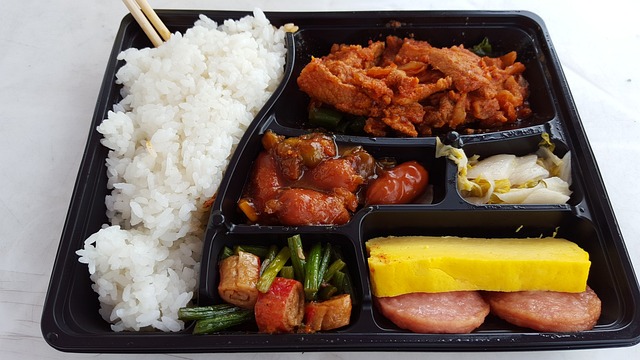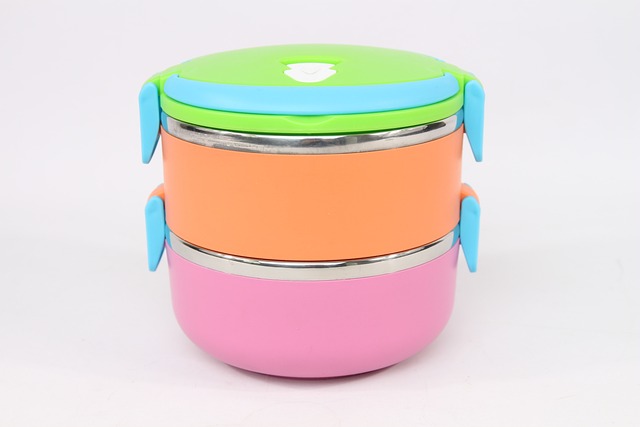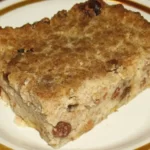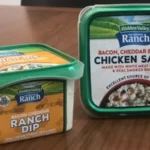
It’s simple to store food in a lunchbox, but for some people, it can be difficult to keep that food warm for several hours. It doesn’t make sense for the food to stay heated for hours while you wait to taste it.
Do you want to know how to keep your food in a lunch box warm for hours? Here is a comprehensive, quick-to-follow guide that not only explains how to prepare your food for the best quality, but also includes a wealth of interesting information.
In order to keep your food warm in a lunch box, we’ve compiled some of the best advice and techniques.
Table of Contents
How to Keep Food Warm in a Lunch Box?
Here are our top ideas for how to easily store food for lunch so that it doesn’t get cold:
Insulated Containers
The best way to keep food warm in lunchboxes is to buy some insulated food containers. They perform similar functions to a thermos. Without using electricity or reheating, thermoses and insulated food containers can maintain the temperature of the food inside for a while. Usually, this is done by the container creating a tight vacuum seal that prevents hot air from escaping or by including insulated materials or lining in the container.
When searching for insulated containers, look specifically for containers with the word “insulated” in the description or look for food containers that are made of stainless steel. While some products will have top-notch insulated technology, stainless steel food containers will perform similarly. A stainless steel container will heat up when hot food is placed inside of it, keeping the food warm for several hours.
Boiled Water
Boiling water can also be used to heat a stainless steel food container so that your food will stay warm for a longer period of time. Boil some water in the morning before packing your lunch, and then pour the hot water into your stainless steel container. Until the food that will be placed in the container is heated, close the lid and leave the water to stand.
Warm up your food and then pack your lunch. Dry the interior of your container after emptying the hot water. Put the heated food in your insulated container, then tighten the lid. The food will stay warmer for a longer period of time in the stainless steel, which should be hot from the boiled water.
Foil
Wrapping hot food items in aluminum foil is an inexpensive way to keep them warm in a lunchbox. Even though foiling hot items won’t keep them warm for a long time, it will keep the food warm for a while.
Although foil isn’t technically insulated, it will temporarily warm up in temperature when hot food is placed inside, keeping the food warm at the same time. To keep the temperature warm for longer, you can also try wrapping the foil in a towel or piece of plastic saran wrap.
Hot Water Bottle
Use a hot water bottle to keep the food warm in a lunchbox. Commonly made of rubber or thermoplastic, hot water bottles have a hollow interior that allows for the addition of warm water. People who are feeling under the weather and want to relieve any aching body parts most frequently use hot water bottles.
Check for rips or holes before adding hot water to your hot water bottle. You can put water inside the bottle after giving it a thorough inspection. Never use boiling water. The material might become brittle when exposed to boiling water and might rip or sustain other damage. Fill your bottle with boiled, slightly cooled water, being careful not to overfill it.
It is advised to fill the bottle 3/4 of the way, then screw on the lid. Placing a hot water bottle at the bottom of your lunchbox and placing the food container you want to keep warm on top will help keep the food warm.
Insulated Thermal Bags
Insulated thermal bags essentially accomplish the same task—but better—as wrapping hot food in foil and a towel. It is simple to transport these thermal bags and they reflect heat back into the contents. Insulated thermal bags frequently come in packs and are on the more affordable end of the price spectrum. You can rinse a bag after using it and use it again several times, or if it gets too worn, you can throw it away and use a fresh, new one.
Insulated Lunch Box
Your insulated food containers should be kept in an insulated lunch box for added insulation. These days, it’s easy to find an insulated lunch box that matches your preferences and budget. The interiors of insulated lunch boxes may be waterproof, have multiple compartments, insulated lining, and special sections for heating packs or hot water bottles, among other features. Find out which insulated lunch box will suit your needs and budget by doing some research.
Separate Hot and Cold Items
Despite the space constraints, try your best to keep hot and cold items apart. Even if you already have separate containers for hot and cold food, you can further divide the two types of food using a physical divider. To create a subtle separation between your hot and cold containers, try using neutral objects like napkins or utensils. By doing this, you can guarantee that the temperatures in both of your containers remain as stable as possible.

The Best Temperature for Storing Food in a Lunch Box
There’s a “danger zone” of temperature, which ranges between 40°F to 140 °F (4.4°C-60°C). Even though there is a considerable gap, I strongly advise staying away from it.
Particularly in a small space like a lunch box, it is challenging to maintain the ideal temperatures for both hot and cold food. As a result, it would be best to avoid mixing these on the same day.
A thermometer should also be available so you can monitor and adjust the lunchbox’s temperature.
Hold The Warmth for Hot Food
The perfect temperature to preserve your hot food
Undoubtedly, hot food needs to be kept in a warm environment. Above the “danger zone”, which is 135°F is the ideal temperature for preserving hot food.
Hot food that has been left outside below the range of 135°F for over 4 hours is no longer edible.
To prevent cross-contaminants from appearing in freshly prepared and reheated food, separate the two.
Stay in Low Temperature for Cold Food
It’s hard to keep cold food to be fresh in a lunch box
On the contrary, to avoid the “danger zone”, cold food needs to be kept at a temperature below 40°F.
The shelf life of cold food in this condition is up to 6 hours. But remember to check the temperature regularly, because if cold food is exposed to outside temperatures for over 2 hours, it will spoil.
Read about What Oven Temperature Do You Need to Keep Your Food Warm?
Interesting Facts About Lunch Boxes
Let’s take a moment to learn about lunch boxes before getting right to the point, ok? Long-term use may be possible because you will be able to use it effectively once you are familiar with all of its features and functions.
The Fascinating Origin of Lunch Boxes in United States
The lunch boxes have long been a culture in the United States
It all began in the middle of the 19th and the beginning of the 20th centuries when employees started bringing lunches to work rather than leaving for lunch at home. The idea of lunch boxes at the time was limited to using tobacco-tinted containers to transport food.
Between the 1950s and the 1970s, lunch boxes reached their peak popularity, and kids loved them because of the advancements in decoration. On nearly every lunchbox were images of cartoon characters and pop idols.
The evolution of lunch boxes up until the 1980s occurred when plastic dominated the market. Plastic and vinyl have taken the place of metal as the preferred materials.
Since then, there have been many variations of the lunch box made of various materials, but the insulated polyester lunch box still dominates the market.
Names of Lunch Boxes Throughout the World
The beautiful Bento of Japan represents an aspect of Eastern culture
There are many different origins for the lunch box around the world. Along with its history, lunch boxes have different names around the world.
Bento in Japan and Dosirak in Korea are two different names for the lunch box that are used in Asia.
The lunch box is known by the names Tiffin Box, Tiffin Carrier, or Tiffin Tint in India and Mumbai.
Additionally, the term “Tiffin” refers to lunchboxes in south Asia in the United Kingdom due to Indian influence. (1)
The Incredible Benefits of Using a Lunch Box
This candy box gives you more than just a way to carry food around.
What springs to mind first when you consider the advantages of a lunch box? I know you think it’s just portable storage for you to carry food around, but you’re wrong! That’s not all, though.
Preserving Fresh Taste
When food is properly packed in a lunch box, it is kept in perfect condition to retain heat, whether it is hot or cold. This ensures that the food is always at your disposal whenever you want a treat.
Nutritional Retaining
The nutrition in the food should be fine since, as I previously mentioned, a lunch box is excellent for keeping your food in perfect condition.
Bacterias and Insects Inhibition
Consider the lunchbox as a shield that keeps out potentially dangerous outside elements like dust, insects, etc., from spoiling your food.
The original warmth of the food can be maintained in a lunchbox with insulating material for a few hours, and the food’s temperature can prevent bacteria from growing there.
Shelf Life
The food can extend its shelf life by a few hours if it is shielded from potentially dangerous outside influences and kept in a perfect environment.
A rigid and dependable construction lunch box is especially important if you’re working at a construction site. It will not only safeguard your food but also guarantee that you fully appreciate your midday meal.
Convenient
A lunch box allows you to pack many types of food in it and carry it around without worrying anything would happen with your food. It’s up to you whether you want to take it on a pleasant camping trip or carry it with you every day to the office.
Highly Economical
Long-term savings of five times that amount could be achieved with a small investment in a lunchbox. You could easily pack home-cooked meals for your job rather than ordering takeout.
Consider the money you waste as well by throwing away food that was still supposedly edible if it had been kept in the lunchbox in the first place.
FAQs
How Do You Control Sandwiches Heat in a Lunch Box?
Use the aluminum foil technique I mentioned above, if you like. Adding towels outside and wrapping the sandwiches in aluminum foil to trap the heat inside. Then, if possible, reheat them in the oven or put them in an insulated lunch box, thermos, or electric lunch box.
How to Preserve the Heat of Food in a Lunch Box Without Thermos?
The aluminum foil and towels technique is a fantastic replacement, as I already mentioned. Additionally, using and combining aluminum foil with hot water bottles or heat packs is a great idea. As a last resort, you might try packing your food in a container and covering it with a sweater.
Could the Bento Box Keep Your Food Warm?
The Bento Box is similar to a glass lunch box in that it can keep food warm for two hours, though the longer it is kept warm, the worse the quality will be. If you put the bento in an insulated bag, you can, however, increase the heat duration to 4 hours.
What Could Be the Best Insulator for a Lunch Box?
It’s air, which may come as a surprise. Consider packaging made of bubbles. It is successful at keeping heat from escaping.
What Can You Do to Insulate a Lunch Box?
To make the outer cover, cut two pieces of fabric measuring 16 x 13 in. Attach your insulation with glue before sewing each of the cut fabrics. Use fundamental straight stitches to continue attaching them to the bag after that.
The two inner pads should be cut to match the outer ones. Each of the inner linings should have an insulation piece glued to the fabric’s center before being sewn into place.
Do You Know Where to Put An Ice Pack in Your Lunch Box?
You can put ice packs on top of the food. These days, there are some lunch boxes and bags with a compartment for ice packs. This means that if yours does, you already know where to place the ice pack.
How Do You Keep Cheese Cold in a Lunch Box?
Simple: Before packing the cheese sticks in the lunchbox, freeze them. You can include some ice packs for even more assurance.
What is the Best Lunch Box That Keeps Food the Longest?
The Thermos King is the best available right now, according to some expert tests. Liquids can be kept for nine hours straight and food can be kept cold for up to 14 hours.
Conclusion
Therefore, choose hearty items like stews, chili, sandwiches, or pasta dishes if you’re looking for food that will stay warm in your lunchbox. Until you’re ready to eat them, these foods will remain warm.
Nothing is worse than bringing your lunch to work only to discover that it is cold. You won’t ever have to endure a chilly lunch again with my advice, though!
You can have nice hot lunches all winter long if you invest in a good lunch box, use hot water bottles or heating pads, and choose hearty foods that keep their heat well.
We sincerely hope that this aids in your effort to spend less time stressing over what you need to grab and head out the door.
Suggested articles:






